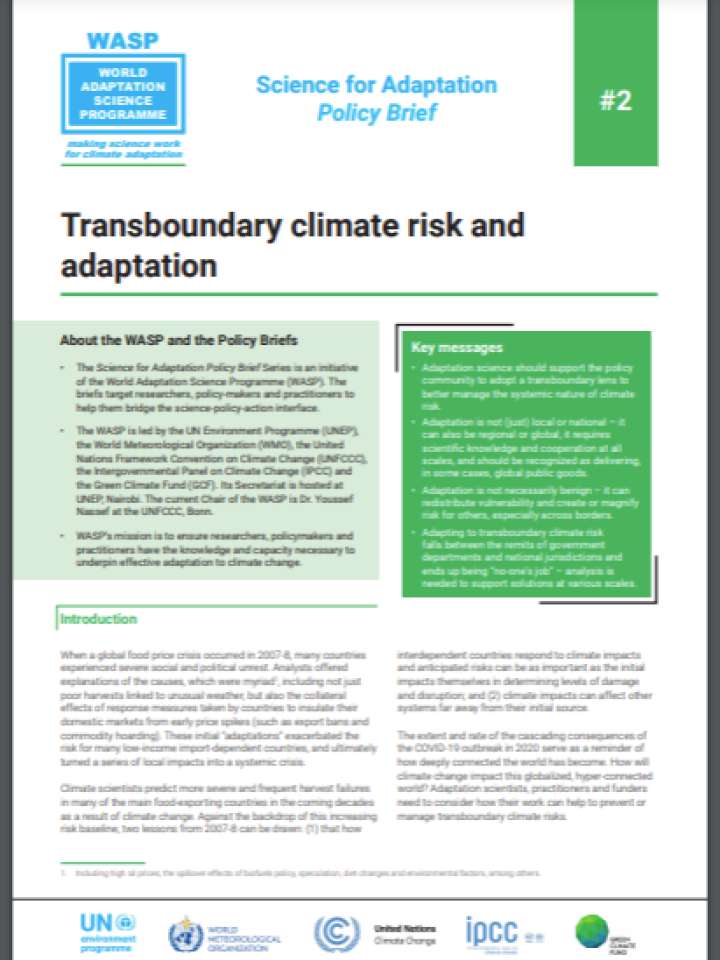Transboundary climate risk and adaptation
This policy brief summarises the present state of knowledge on transboundary climate risks and discusses the implications for adaptation programming, policy and global governance. When a global food price crisis occurred in 2007-8, many countries experienced severe social and political unrest. Analysts offered explanations of the causes, which were myriad, including not just poor harvests linked to unusual weather, but also the collateral effects of response measures taken by countries to insulate their domestic markets from early price spikes (such as export bans and commodity hoarding). Two lessons from 2007-8 can be drawn:
- That how interdependent countries respond to climate impacts and anticipated risks can be as important as the initial impacts themselves in determining levels of damage and disruption; and
- limate impacts can affect other systems far away from their initial source.
This brief provides four key messages on transboundary climate risks:
- Adaptation science should support the policy community to adopt a transboundary lens to better manage the systemic nature of climate risk.
- Adaptation is not (just) local or national – it can also be regional or global, it requires scientific knowledge and cooperation at all scales, and should be recognized as delivering, in some cases, global public goods.
- Adaptation is not necessarily benign – it can redistribute vulnerability and create or magnify risk for others, especially across borders.
- Adapting to transboundary climate risk falls between the remits of government departments and national jurisdictions and ends up being “no-one’s job” – analysis is needed to support solutions at various scales.
Explore further
